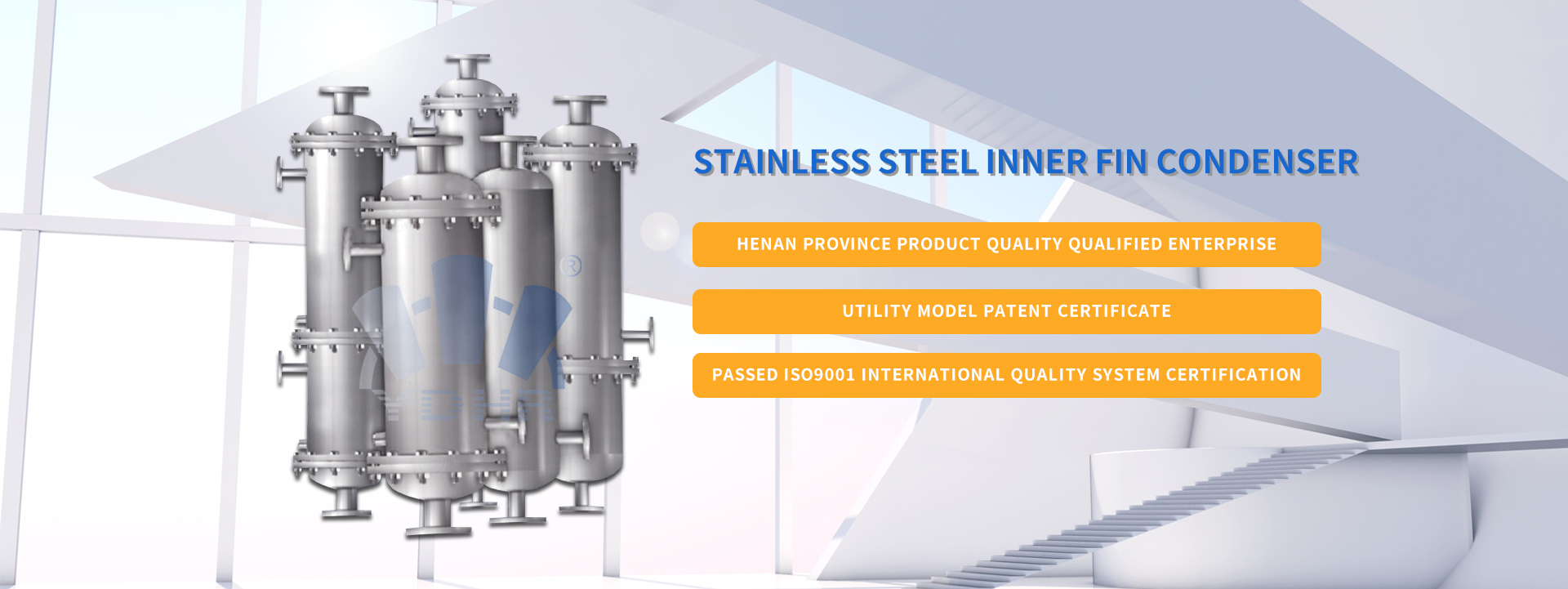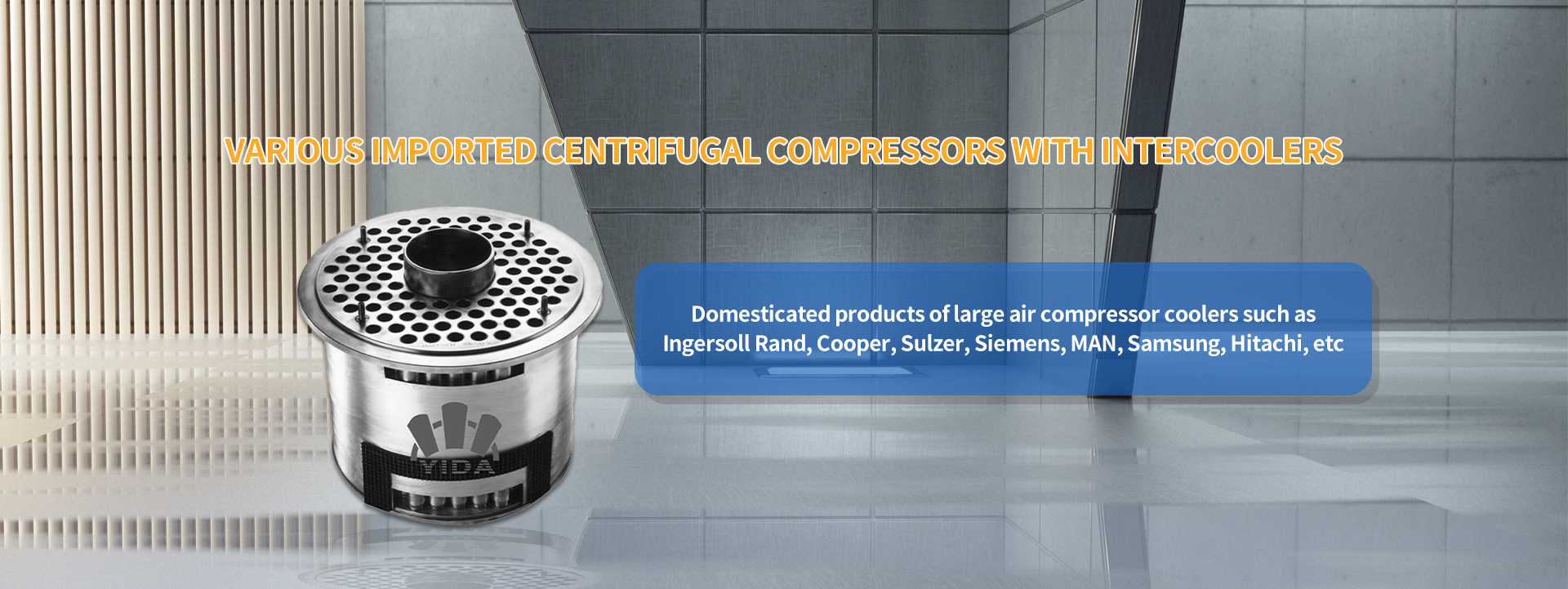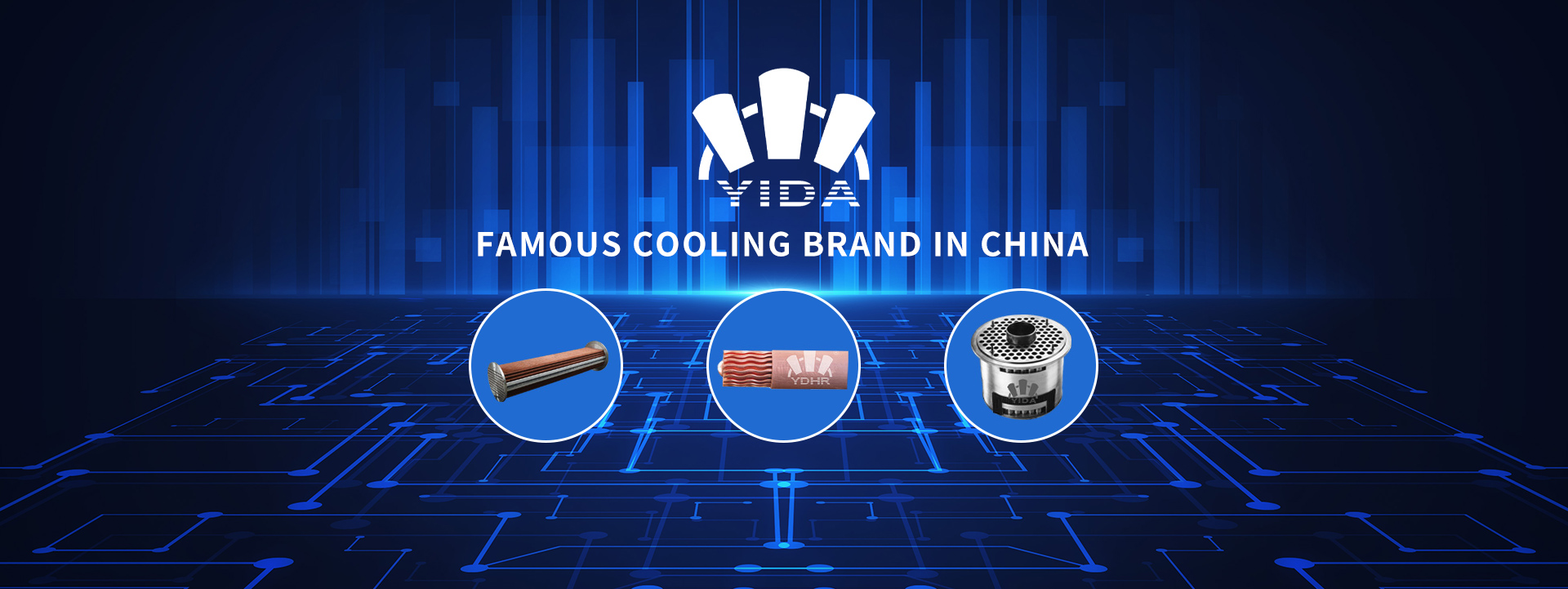-
Shell and tube heat exchangers are used in the chemical industry Oil Power General equipment for food and many industrial sectors
Shell and tube heat exchanger, also known as tubular heat exchanger. It is a partition type heat exchanger with the wall of the tube bundle enclosed in the shell as the heat transfer surface. This type of heat exchanger has a simple structure, reliable operation, and can be made of various structural materials (mainly metal materials). It can be used at high temperatures and pressures and is currently the most widely used type. Shell and tube heat exchangers are mainly divided into fixed tube plate heat exchangers, floating head heat exchangers, U-shaped tube heat exchangers, and eddy current film heat exchangers. Shell and tube heat exchangers are common equipment in many industrial sectors such as chemical, petroleum, power, food, and others, and play an important role in production. Advantages of Shell and Tube Heat Exchanger: 1. High heat transfer coefficient 2. Compact organization 3. Not easy to get dirty 4. Not easy to leak 5. Easy installation 6. Reliable quality
06-30
2020
-
The sleeve heat exchanger used by Atlas has obvious advantages
Atlas air compressor G series is a screw compressor, of which GR is a two-stage compression, oil injection screw compressor, and the supporting interstage cooler is a jacketed heat exchanger, which is widely used in air conditioning, refrigeration, chemical and other industrial fields. In order to save energy, slots are often opened on the surface of flat fins or corrugated plates are used to enhance heat transfer, mainly including flat fins, slotted fins, triangular corrugated fins, and sinusoidal corrugated fins. At present, the air coolers used in domestic industries such as refining, chemical, and power are developing towards * * and compactness. For many years, the air coolers used in these industries have mostly been wound or bimetallic rolled plates. Compared with traditional wound and rolled plates, the sleeve plate has a larger fluid flow resistance outside the tube, but its structure is compact, mechanical vibration is light, airflow is uniform, and heat transfer effect is greatly improved. Therefore, the sleeve plate has gradually eliminated traditional fin types and is increasingly used in gas-liquid heat exchange applications such as air coolers.
06-30
2020
-
Cooper cooler - excellent performance
The inlet and outlet of the Cooper cooler water filter are designed as an upper and lower split, which not only prevents direct impact of water pressure on the filter screen, but also changes the situation of blockage caused by debris staying away from the discharge outlet during aggressive filter screen filtration. When discharging, several filter chambers need to be cleaned one by one, which often leads to blockage. The material and structure of the mesh board greatly improve the flow area of the water, effectively reducing the water resistance of the filter screen, ensuring reliable operation without jamming, blockage, or blockage, and greatly extending the filter screen. Using 2-8mm stainless steel plate for stamping and forming, the mesh core can withstand a differential pressure of 150kPa without deformation or damage. It has the characteristics of long working life, corrosion resistance, no rust, smooth appearance, and no scaling. Cooper coolers are very popular in future applications and daily life. Water enters the water filter through the lower inlet, and when impurities in the water pass through the mesh core, they are trapped on the mesh core due to their larger volume than the mesh core holes. When they accumulate to a certain amount, a certain pressure difference is formed at the inlet and outlet. The precision and diameter of the filter screen vary, and the pressure difference is also different. Scroll one step every 10-30 seconds, with the handle pointing towards each recess and fixed until it rotates once, closing the drain valve and completing manual drainage.
06-30
2020
-
Stainless steel inner finned tube - safety above all else
Stainless steel inner finned tubes are uniformly distributed with spiral electric heating alloy wires (nickel chromium, iron chromium alloys) along the axial direction of the inner base of the tube. The empty space is filled and compacted with magnesium oxide sand with good insulation and thermal conductivity. The ends of the tube mouth are sealed with silicone or ceramic. This metal armored electric heating element can heat air, Shanghai Xu Electronics waste heat recovery device metal mold, and various liquids. Stainless steel single head electric heating tube is made of metal tube as the outer shell. According to the different application states, safety and equipment requirements of the electric heating tube, the electric heating tube of the Hangzhou oxygen concentrator cooler will also include sealing structures, terminal structures, flanges, temperature control or safety wires and other structures. Stainless steel single head electric heating tube is made by placing an electric heating element in a metal tube, filling it tightly with crystalline magnesium oxide powder with good heat resistance, thermal conductivity, and insulation properties in the Qingjiang Petrochemical oil cooler, and processing it with other technologies. It has the characteristics of simple structure, high mechanical strength, high thermal efficiency, safety and reliability, simple equipment, and long service life. Widely applicable to various equipment such as saltpeter tanks, water tanks, oil tanks, acid alkali tanks, melting furnaces for easily melted metals, air heating furnaces, drying furnaces, drying ovens, hot pressing molds, etc. Uniformly distribute spiral electric heating alloy wires along the axial direction of the base inside the pipe.
06-30
2020
-
Stainless steel inner finned tube - * * is just that powerful
Stainless steel inner finned tube and spiral finned tube are a type of heat transfer element. The heat transfer area of stainless steel finned tubes is several to tens of times that of light tubes. Stainless steel finned tubes reduce the resistance of downward movement, reduce metal consumption, and improve the economy and operational reliability of heat exchange equipment. Nowadays, stainless steel finned tubes are widely used in various boilers. The domestically produced Cooper cooler has been proven through years of practice that the characteristics of the stainless steel finned tube condenser can fully meet the working conditions of the machine, and all goals have reached or exceeded those of the original product. Fit the fins onto the outer surface of the tube by interference fit. Using an early method of processing finned tubes. Due to the simplicity of the skill set, low skill requirements, low equipment prices, and ease of repair, many factories in Hangzhou still choose oxygen generator coolers. This skill is a labor-intensive skill program that is suitable for the funding and skill requirements of typical small factories or township enterprises. A manual set is called a craft set. The method of using things and relying on human strength to press the fins in one by one has limited pressing force on the fins, resulting in a small interference fit and easy loosening of the fins. Mechanical fin assembly is carried out on a fin assembly machine because the pressing of the fins relies on mechanical impact force or liquid pressure, and the pressing force is large. Therefore, a larger interference fit can be selected. The connection strength between fins and tubes is high and not easy to loosen. The production rate of the Qingjiang Petrochemical oil cooler set is high, but the noise is loud, the safety is poor, and the working conditions of the workers are poor. Although hydraulic transmission does not have the above-mentioned problems, the equipment quotation is relatively expensive, and the skill requirements for maintenance personnel are high, resulting in lower productivity.
06-30
2020
-
Ingersoll Rand Heat Exchanger - Exquisite and Long lasting
A heat exchanger is an energy-saving device that transfers heat between two or more materials at different temperatures. One of the primary devices for improving power utilization efficiency is to achieve the goal of meeting the technical requirements and ensuring that the fluid temperature meets the process rules. The heat exchanger profession involves more than 30 industries such as HVAC, pressure vessels, reclaimed water treatment equipment, chemical, petroleum, etc., forming an industrial chain with each other. The data shows that in 2010, the planned market for China's heat exchanger industry was around 50 billion yuan, mainly concentrated in the fields of petroleum, chemical, metallurgy, electricity, ships, heating, refrigeration and air conditioning, machinery, food, pharmaceuticals, etc. During this period, the petrochemical industry remains the largest market in the heat exchanger industry, with a planned market value of 15 billion yuan; The market plan for heat exchangers in the field of electric metallurgy is around 8 billion yuan; The market for ship industry heat exchangers is planned to be over 4 billion yuan; The planned market for mechanical industry heat exchangers is about 4 billion yuan. Ingersoll Rand coolers, Ingersoll Rand oil coolers, and stainless steel finned tube condensers are very convenient. The planned commercial center for occupational heat exchangers in centralized heating exceeds 3 billion yuan, and the food industry also has a commercial center worth nearly 3 billion yuan. Other fields such as spacecraft, semiconductor equipment, nuclear power islands, wind turbines, solar photovoltaic power generation, and polycrystalline silicon production all require a lot of professional heat exchangers. These markets have a planned budget of about 13 billion yuan. Significant achievements have been made in the domestic heat exchanger industry in terms of energy conservation and efficiency improvement, increasing heat transfer power, reducing heat transfer area, lowering pressure drop, and improving equipment thermal intensity. According to the increasing demand for stable heat exchangers in industries such as petroleum, chemical, power, metallurgy, shipbuilding, machinery, food, and pharmaceuticals, the Chinese heat exchanger industry will adhere to a steady increase in the future. Intermodal heat exchangers are two fluids with different temperatures that move in a space separated by a wall, conducting heat through the wall and convective flow on the outside of the wall, allowing for heat exchange between the two fluids. There are various types of wall to wall heat exchangers, including shell and tube, sleeve, and others. The wall mounted heat exchanger is currently the most widely used type of heat exchanger.
06-30
2020
-
The excellent characteristics of inner finned tubes
Author: Zhengzhou Yida High Energy Heat Exchanger Co., Ltd. Release time: 2017/3/9 23:10:18 Click rate: 35222 The internally expanded finned heat exchanger tube is a new type of heat exchanger tube that emerged in China at the end of the 20th century, and has been reported for more than 20 years in foreign countries. The internally expanded finned tube heat exchanger is a new type of heat exchanger developed and produced for the characteristics of gas-liquid heat exchange. Its design changes the traditional design method by adding internally expanded fins inside the heat exchange tube, increasing the heat exchange area on the air side (inside the tube), improving the overall heat transfer coefficient, effectively solving the problem of heat exchange imbalance caused by different thermal conductivity coefficients of the heat exchange medium, achieving significant energy-saving effects, and reducing the consumption of cooling water. The internally expanded finned heat exchanger tube has excellent characteristics such as good reinforcement effect, high fin efficiency, high technical content, and does not produce significant pressure loss. It is an emerging and ideal gas heat exchanger component in China. Internal finned tube heat exchangers are mainly used in industries such as petroleum, chemical, pharmaceutical, metallurgy, power, refrigeration, heat pumps, and food. The main applicable working conditions are: (1) cooling and heating of various process gases; (2) Condensation of various process gases; (3) Recovery, cooling, and condensation of various process gas exhaust gases; (4) Working conditions such as high (low) viscosity liquids and water heat exchange; 1. The heat exchange efficiency is greatly improved, and the energy-saving and water-saving effects are significant 2. Able to withstand high temperature and pressure with low resistance reduction 3. The heat exchanger has a small volume and occupies a small area 4. Low investment cost and short return period 5. Reduce maintenance costs for users
06-30
2020
-
Single metal finned tube The unique advantages of bimetallic finned tubes and threaded tubes
Single metal finned tube, also known as aluminum rolled finned tube, is made by rolling aluminum tube as a whole. Its advantages include non-contact thermal resistance, high strength, heat resistance, mechanical vibration resistance, and good thermal expansion performance. The tube body is free of burrs, wrinkles, and easy to clean. During wet cooling in heating and air conditioning engineering, it is easy to eliminate condensation water on the outer surface of the fins, and it is not easy to form dust or scale in drying heating and other heat exchange situations, with a considerable expanded heat exchange surface. The heat exchanger made of this type of finned tube is more effective than the series or wound plate heat exchanger, and is a widely used heat exchanger. Single metal finned tubes can also be directly rolled from steel pipes or rolled from copper pipes. Bimetallic finned tubes can generally be made of stainless steel, carbon steel, corrosion-resistant steel, nickel steel, titanium tubes, etc., depending on the medium inside the tube. They have good mechanical properties, temperature resistance, pressure resistance, and corrosion resistance. The outer material is aluminum, which is lightweight, cost-effective, easy to process, has good resistance to atmospheric corrosion, and has a beautiful appearance. The fins have high strength and can withstand high-pressure flushing and descaling. The general structure of finned tubes, such as piercing and winding tube bundles, has different metal electrode potentials. When there is water on the surface of the fins, chemical corrosion will occur, resulting in an increase in gap thermal resistance and affecting heat transfer performance. However, rolled finned tubes completely cover the base tube, making them particularly suitable for situations where condensed water or other liquids are sprayed out after the air temperature drops. In addition, due to the fact that the contact stress between the rolled finned tube and the base tube does not disappear, the long-term working contact thermal resistance does not increase, and the heat transfer performance does not decrease, it also has the characteristic of long service life. Therefore, its application is becoming more and more widespread. Currently, bimetallic rolled tubes are mainly used in air coolers and heaters, especially in the refining, chemical, and power generation industries where they have been widely used. Compared with light pipes, threaded pipes have a larger surface area while consuming the same amount of metal materials, which intuitively belongs to * * enhanced heat transfer. However, in essence, it brings about an increase in heat transfer coefficient while increasing the heat transfer area * *. Threads can strip the flow layer off the heat transfer surface, increase the disturbance of the heat transfer surface, and improve the heat transfer effect, thus enhancing heat transfer twice. Meanwhile, long-term practical application has proven that it also has excellent anti fouling performance. Dirt often forms parallel scales along the edge of the wave peak. As the temperature changes during operation, the pipe will expand and contract, and this "accordion" like expansion and contraction effect will prevent the formation of dirt. And for the light pipe, dirt will form a cylindrical layer on the wall of the pipe, without any natural mechanism to prevent it. In addition, due to the use of ordinary light tubes as blanks and rolling processing, their mechanical strength and corrosion resistance are not inferior to the original light tube blanks, which can fully ensure the long-term reliable operation of the heat exchanger. It can also transfer heat under small temperature differences, recycle low-temperature heat sources, and effectively reduce losses. In addition, threaded pipes are easy to process, cost-effective, and easy to clean. Their typical application is in oil heat exchangers, and they also have good heat transfer enhancement effects for condensation and boiling outside the pipes.
06-30
2020
-
Ingersoll Rand heat exchanger
Heat exchangers play an important role in chemical, petroleum, power, food, and many other industrial productions. Ingersoll Rand coolers transfer local heat from hot fluids to cold fluid equipment. Its heat exchanger can be used as a heater, cooler, condenser, evaporator, and reboiler in chemical production, and is widely used. A heat exchanger is an energy-saving device that transfers heat between two or more materials at different temperatures, allowing heat to be transferred from a higher temperature fluid to a lower temperature fluid. This ensures that the fluid temperature meets the specified process requirements and is also one of the main devices for improving energy utilization efficiency. The Ingersoll Rand oil cooler industry involves nearly 30 industries such as HVAC, pressure vessels, reclaimed water treatment equipment, chemical, petroleum, etc., forming an industrial chain with each other. The domestic heat exchanger industry has achieved significant results in research on energy conservation and efficiency improvement, improving heat transfer efficiency, reducing heat transfer area, reducing pressure drop, and enhancing device thermal intensity. The increasing demand for stable heat exchangers in industries such as petroleum, chemical, power, metallurgy, shipbuilding, machinery, food, and pharmaceuticals is applicable to heat exchangers with different media, working conditions, temperatures, and pressures, and the structural types are also different. Heat exchange occurs between two fluids through thermal conduction on the wall and convection of fluid on the wall surface. Stainless steel inner finned tube wall heat exchangers come in shell and tube, sleeve, and other types of heat exchangers. Inter wall heat exchanger is currently the most widely used heat exchanger.
06-30
2020
-
Cooper Series Coolers - Application is Truth
Cooper series coolers generally use water or air as a coolant to remove heat. There are wall mounted coolers, spray coolers, jacket coolers, and serpentine coolers. Excellent cooler is a type of heat exchange equipment used to cool fluids, generally using water or air as a coolant to remove heat. It includes wall coolers, spray coolers, jacket coolers, and serpentine coolers. Widely used as pure water, water air, oil-water, and oil air cooling equipment for high-power silicon rectifiers, induction furnaces, intermediate frequency furnaces, and other large electrical equipment as cooling and maintenance accessories. The water filter is a backwash brush structure, also known as an industrial water filter with two types of filters: manual water filter and electric water filter. The Ingersoll Rand cooler is suitable for various professions such as power plants, chemical industry, printing and dyeing, papermaking, etc. The diameter of the Ingersoll Rand series cooler is between DN50-500mm. The inlet and outlet of the water filter are designed in a split structure to filter impurities larger than 2mm, which not only prevents water pressure from directly impacting the filter screen, but also makes it an excellent type of heat exchange equipment. It also changes the situation where debris is kept away from the discharge outlet during radical filter filtration, and several filter chambers need to be cleaned one by one during discharge, often resulting in blockages. Using 2-8mm stainless steel plate for stamping and forming, the mesh core can withstand a differential pressure of 150kPa without deformation or damage. It has the characteristics of long working life, corrosion resistance, no rust, smooth appearance, and no scaling.
06-30
2020
-
Plate Heat Exchanger - Experience a Different Taste
Plate heat exchanger is an ideal equipment for heat exchange between liquid and liquid, as well as between liquid and vapor. It has the characteristics of high heat transfer efficiency, low heat loss, compact and lightweight internal fin heat exchange tube structure, small footprint, wide application, and long service life. Under the same pressure loss situation, a plate heat exchanger is a type of heat exchanger composed of a series of metal sheets with a certain corrugated shape stacked together. Thin rectangular channels are formed between various plates. Its heat transfer coefficient is 3-5 times higher than that of tube heat exchangers, and small plate heat exchangers occupy one-third of the area of tube heat exchangers, with a heat recovery rate of over 90%. Due to the inversion of different corrugated plates, a chaotic flow channel is formed, causing the fluid to rotate in three dimensions within the flow channel between the corrugated plates. Turbulence can occur at lower Reynolds numbers (usually Re=50~200), resulting in a high heat transfer coefficient, which is generally considered to be 3~5 times that of the shell and tube type. In a shell and tube heat exchanger, two fluids move separately in the tube side and shell side, generally exhibiting cross flow activity with a small logarithmic uniform temperature difference correction coefficient. Plate heat exchangers, on the other hand, are mostly operated in parallel or countercurrent flow, with a correction coefficient usually around 0.95. In addition, the activities of cold and hot fluids in the plate heat exchanger are parallel to the heat exchange surface and have no bypass flow. As a result, gas plate heat exchangers have a small temperature difference at the end of the plate heat exchanger. The heat transfer plates of plate heat exchangers are processed by stamping, which is highly standardized and can be produced in large quantities. Shell and tube heat exchangers are usually manufactured by hand.
06-30
2020
-
Internal fin heat exchange tube, bidding farewell to old methods and opening up new ones
The finned heat exchanger uses mechanical winding. The heat transfer function is good and stable, with low resistance to air passing through. Steam or hot water flows through the steel pipe, and heat is transferred to the air passing between the fins through the fins tightly wrapped around the steel pipe, achieving the effect of heating and cooling the air. Copper strip, aluminum strip, etc. [1] The planning of heat exchange tubes as heat transfer and pressure carriers is one of the key technologies in various tubular heat exchangers The structure and characteristics of finned tubes were analyzed, and based on the COMOSWORKS finite element analysis module, it was found that finned radiators, which are widely used in CNG coolers, are a type of heat exchange equipment widely used in gas and liquid heat exchangers. The inner finned heat exchange tube achieves the purpose of enhancing heat transfer by adding fins to a general base tube, which can be made of steel pipe; Stainless steel tube for condenser; Fin tube radiator copper tube, etc. Fins can also be made of steel strips; Stainless steel strip. Fin type heat exchangers are primarily used for air heating in dry systems and are the primary equipment in hot air devices. The heat medium used for steel fin radiators can be steam or hot water, or thermal oil. The working pressure of steam generally does not exceed 0.8 Mpa, and the temperature of hot air is below 150 ℃.
06-30
2020
Welcome to the official website of Henan Yida Heat Exchange Equipment Co., Ltd!








